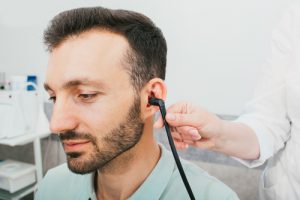 Hearing Tests for Adults: What to Expect
Hearing Tests for Adults: What to Expect
Hearing loss can occur at any age and can be caused by a variety of factors such as aging, loud noise exposure, and certain medical conditions. If you suspect you have hearing loss, it’s important to get a hearing test as soon as possible to determine the extent and type of hearing loss. In this blog post, we’ll discuss what you can expect during a hearing test for adults.
Preparing for the Hearing Test
Before your hearing test, there are a few things you can do to prepare. Firstly, make sure you bring an insurance card and any relevant medical information with you. You should also inform the audiologist of any medications you’re taking as some medications can affect hearing.
It’s also helpful to think about any symptoms you’re experiencing such as difficulty hearing conversations or hearing muffled sounds. This will help the audiologist determine the type and degree of your hearing loss.
The Hearing Test Process
A hearing test typically takes 30 to 60 minutes and involves several tests to determine the type and degree of hearing loss.
The first step is a physical examination of your ears to check for any blockages or abnormalities that may be affecting your hearing. This involves looking into your ears with an otoscope and checking for any signs of earwax, ear infections, or damage to the eardrum.
The next step is a pure-tone audiometry test, which measures your ability to hear different frequencies at various loudness levels. You will sit in a soundproof booth wearing headphones and be asked to indicate when you hear a series of beeps or tones. The audiologist will plot your responses on an audiogram, which will show any hearing loss you may have. This test measures the degree of hearing loss in decibels (dB) and the configuration of hearing loss, which relates to which frequencies are affected.
After the pure-tone audiometry test, you may also have a speech audiometry test, which measures your ability to hear and understand speech. You will listen to a series of words or sentences at different volumes and be asked to repeat them. This test helps determine your ability to hear and understand speech in different listening environments.
Other tests that may be done during a hearing evaluation may include impedance testing, which checks the function of the middle ear, and otoacoustic emissions (OAE) testing, which measures the response of the inner ear to sound.
Interpreting the Results
Once all the tests are completed, the audiologist will review the results with you. The audiogram will show the degree and type of hearing loss, as well as the configuration of your hearing loss. The audiologist will also explain what sounds and frequencies you’re able to hear and any sounds or frequencies you’re missing.
The results are plotted on an audiogram, which is a graph that shows the different frequencies that were tested and the loudness level required for you to hear them. The audiogram is divided into octaves, which are groups of tones with similar frequencies. The X-axis represents frequency in Hertz (Hz), while the Y-axis represents loudness level in dB.
The audiologist will use the results of the hearing test to determine the best course of action for your hearing loss. This may involve hearing aids, cochlear implants, or other hearing solutions. The audiologist will explain your options and help you choose the best solution for your specific hearing needs.
Conclusion
Getting a hearing test is an important first step in addressing any hearing loss you may have. A hearing test for adults typically involves several tests to determine the type and degree of hearing loss, as well as the configuration of the hearing loss. The results of the hearing test will help your audiologist determine the best course of action for improving your hearing. If you suspect you have hearing loss, don’t hesitate to schedule a hearing test today and take the first step towards better hearing.

